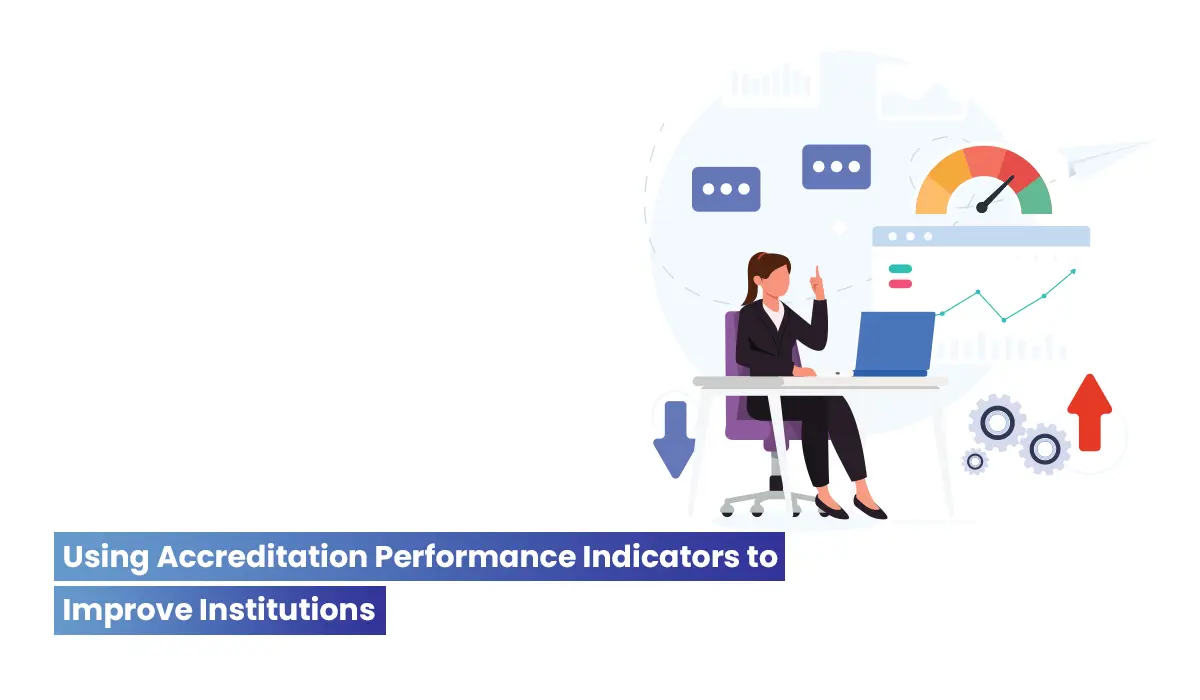The NAAC Accreditation Process and Self-study Report (SSR)
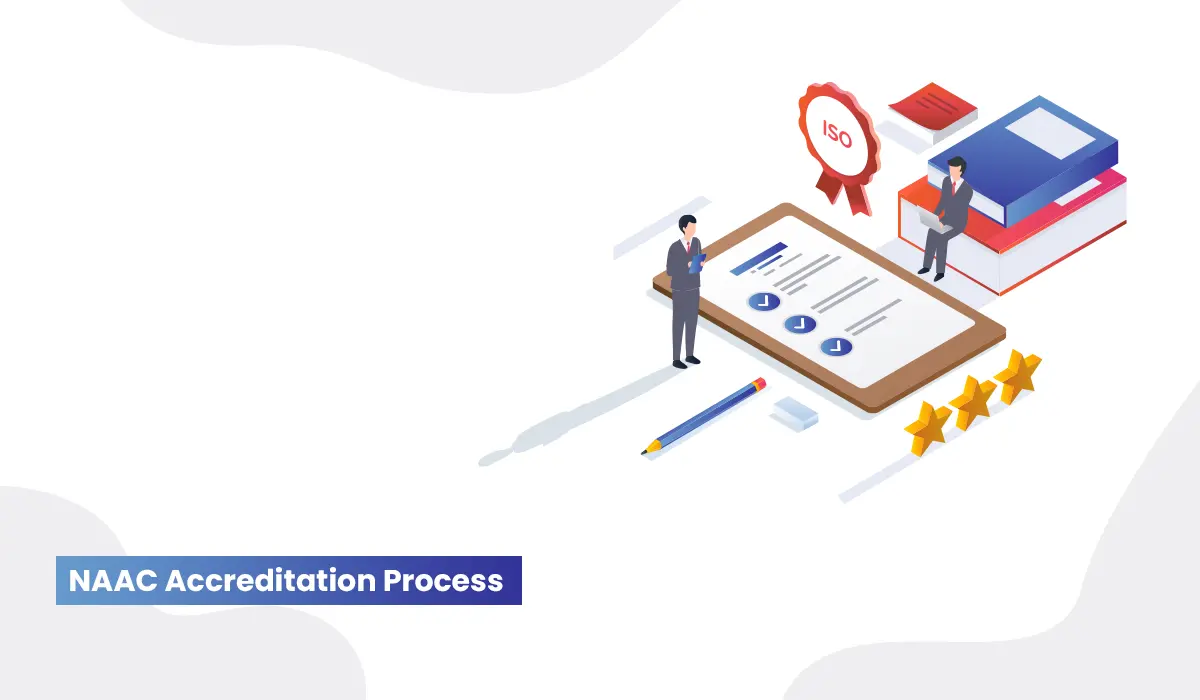
The NAAC Accreditation process is something that every stakeholder in higher education institutions should be aware of. We assume we now have a fair idea about the entirety of the National Assessment and Accreditation Council (NAAC) with our massive blog posted. With that as a base, we thought we would now focus in-depth on the NAAC accreditation meaning, the Assessment and Accreditation (A&A) process, and the NAAC self-study Report in this post.
What is NAAC Accreditation?
The National Assessment and Accreditation Council (NAAC) is a self-governing body funded by India’s University Grants Commission that involves evaluating and accrediting higher education institutions (HEIs) across the country. In contrast to the traditional educational systems, NAAC aims to improve holistic students' development by assisting them in instilling skills and knowledge, quality education, and excellent training.
NAAC accreditation determines the institute's quality in terms of education, infrastructure, research, teaching and learning, and so on. Similarly, NAAC-accredited institutions are eligible for UGGC grants, RUSA grants, financial aid, and much more. Institutes with top NAAC grades such as 'A,' 'B,' and 'C' are the most sought-after because they provide high-quality education. As a result, institutions that want to maximize student learning outcomes by implementing best practices must strive for NAAC accreditation.
The NAAC Accreditation Process
The University Grants Commission (UGC) has made NAAC a mandate by 2022. It very much shows the attention the NAAC is drawing lately. Institutes, colleges, and universities are using NAAC as a yardstick to authenticate their quality standards. Therefore NAAC accreditation has a unique process with a Self-study Report that drills down to achieving institutional excellence. By the time an institute becomes NAAC-ready, it is chiseled to perfection.
You already know that NAAC gives an opportunity for institutions to,
- Square out its efficiency
- Realize its highlights and challenges
- Work on improvement plans for the betterment
Let’s now move forward to know NAAC better by learning the process of Assessment. Concurrently, we will also see what it takes to the Self-study Report of the NAAC.
Assessment and Accreditation (A&A) process with the timeline
NAAC's process of quality assurance is similar to those that are followed by the other Quality Assurance (QA) agencies present worldwide.
NAAC's process is pretty straightforward. The HEIs that prepare for the NAAC Accreditation are put to assess themselves in various ways—submitting documents related to the Self Study Report (SSR) and the Institutional Information for Quality Assessment (IIQA). By these, the HEIs prove their compliance with the policies and criteria put forth by the NAAC committee.
According to the Revised Accreditation Framework (RAF), the NAAC has three levels of ICT-enabled accreditation process. With the new revision, there is more of the Student Satisfaction Survey, Data Verification, and Validation that augments the whole objective of the NAAC. All of these steps call for oodles of data gathering and reporting. No worries. Ours is a centralized Accreditation management software that is built to simplify and automate strategic assessment and outcome tracking of the whole accreditation process.
How does the NAAC Accreditation Work?
On a broader level, the NAAC completes its accreditation in three levels.
- Institutional Information for Quality Assessment (IIQA) and Self Study Report (SSR)
- Data Validation and Verification (DVV) and Pre-qualifier Score / Preparation towards Student Satisfaction Survey (SSS)
- Onsite Assessment - Peer Review by Visiting Teams
We understand your impulse to get NAAC accredited. We, therefore, have broken down these three big processes into seven steps, without affecting their flow. We hope you will find this helpful.
- HEIs registration on the NAAC website
- Institutional Information for Quality Assessment (IIQA)
- SSR submission on acceptance of IIQA (On rejection, an institute has 2 attempts to RESUME the IIA form within 1 year)
- Proceed to Data Validation & Verification (DVV) process and Pre-qualifier Score
- Preparation for the Student Satisfaction Survey (SSS)
- Onsite Peer Visit by NAAC
- NAAC announces the Institutional Grading
Step-by-step NAAC accreditation process
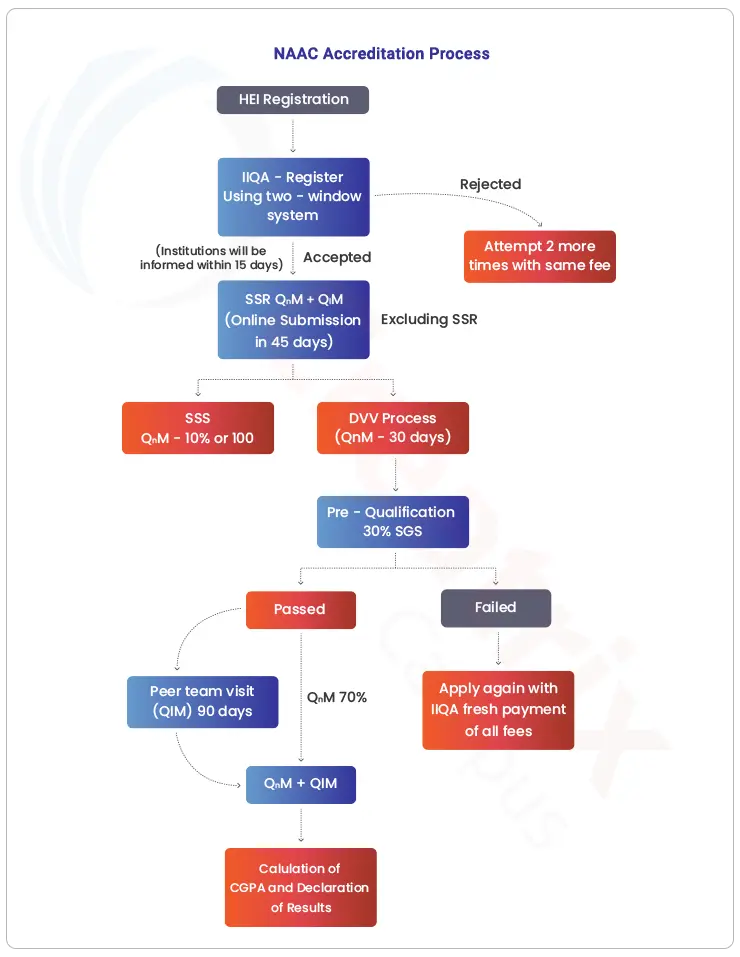
Let's deep dive into each of the above steps to ensure that your institution is NAAC-ready.
1. HEIs registration on the NAAC website
The NAAC accreditation process begins right here with the Higher Education Institution (HEI) completing its registration on the NAAC website.
As a first step, the HEI fills in the registration form, but with a valid AISHE reference code. This is more like building a profile of the institution. You could be part of affiliated constituent colleges, private and deemed universities, or autonomous colleges, but this step is compulsory.
Any institution applying for the Assessment and Accreditation (A&A) process should mandatorily have the AISHE reference code. On the other hand, the affiliated institutions should provide a self-declaration with a clear mention of their latest affiliation status.
Did you know?

Once the HEIs complete the registration form, the NAAC verifies and validates it. NAAC sends the Login Credentials to the HEI, allowing it to access the portal.
2. Completion of IIQA submission
The next big step is IIQA submission.
The HEI logs into the portal with valid user credentials fills in the IIQA (Institutional Information for Quality Assessment) form and pays the IIQA Fee, online. There are a lot of documents that should be submitted online in the right format here.
If you are aware of the older NAAC process, the IIQA resembles more of the Letter of Intent (LoI), but with few differences.
IIQA functions through the two windows system. This new two-window system is a recent update according to the Revised Accreditation Framework (RAF). It is open two times a year, allowing institutions to submit their applications only during these window times. To be more precise, the window system accepts applications at two different points in the year, i.e. May – June and November – December.
Source: Revised Accreditation Framework - NAAC
The IIQA eligibility announcement takes 15 days of time.

Institutions that cross over this step, move to the SSR Submission. Those that get rejected here, can take an additional chance of two more attempts to resubmit the IIQA form and the documents within a year’s time.
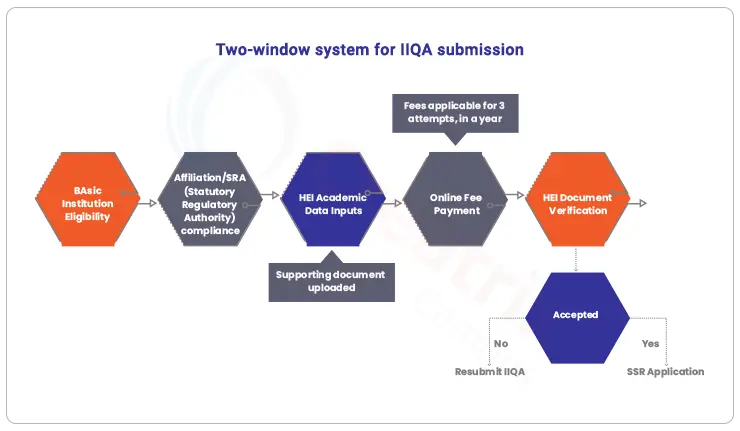
3. SSR submission on acceptance of IIQA
The next step is the submission of the Self Study Report (SSR).
On receiving the IIQA acceptance, the institution works towards the SSR submission.
They fill out the SSR form, upload all necessary files, and pay the first SSR Instalment Fee Online. This is the registration fee. Following this, they submit data with both Quantitative and Qualitative metrics, upload relevant documents, and select non-applicable metrics.
To be noted: Institutes need not submit hard copies of the SSR at this stage. If you may need more help, you could also take the help of the NAAC website which has clear guidance for the submission online.
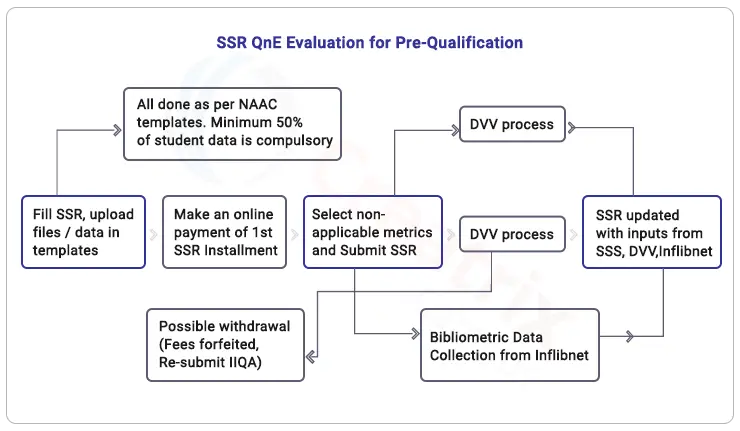
4. Proceed to the Data Validation & Verification (DVV) process
It is now the resting time for the HEIs.
Post SSR submission, all the data/information submitted is validated through the Data Validation and Verification (DVV) process. This verification is done using an online mechanism, which generates a pre-qualifier score.
The DVV process is a lot of elucidation process. If the institutions have provided incorrect information/data for the Quantitative metrics, they will be asked for clarifications here. Formally a deviation report would be sent to the institutions seeking clarification.
At this point, if the institution is found to have submitted fraudulent data/information, it will not only be debarred from the accreditation process but also dealt with legally.
The below image could help you understand the DVV process better.
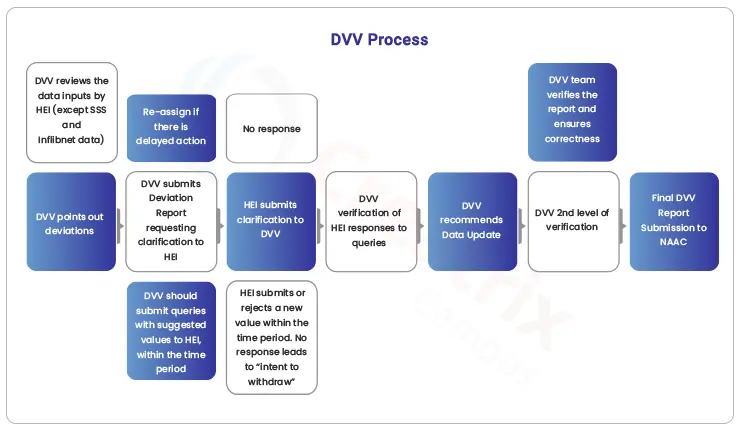
It is to be noted that there is no fixed timeline for the entire DVV process. However, during the DVV clarification stage, the institutions are expected to respond with clarity within the stipulated time set by the DVV team.
As a final step, the NAAC will reassess the submitted data and depending on the extent of the deviation arrive at a pre-qualifier score. The minimum pre-qualifier score that is set to qualify for the SSR is 30%.
Institutes that secure a minimum 30% pre-qualifier score based on the quantitative metrics will only qualify for onsite peer review/ assessment.
Those with less than 30% have to re-apply for the A&A process through the IIQA. This means they have to apply afresh from the start and pay all fees all over again but on one condition. They would be eligible to apply after 6 months from the date of declaration about the prequalification.
Therefore based on the DVV score, the NAAC team would decide on any of the following:
- Dates of the Peer Team Visit
- Deferring the Peer Team Visit
- Disqualifying the institution from having a Peer Team Visit
To be noted: The pre-qualifier scores at this level don’t include the Student Satisfaction Survey (SSS).
As a part of the Peer Team Visit (PTV) Management Process, the committee declares the date of the visit along with the teams to visit the institution within three weeks of receiving the SSR.
5. Preparation for the Student Satisfaction Survey (SSS)
This process happens simultaneously alongside the DVV. Complete submission of the students' data is done during the online submission of SSR.
Student groups are one of the important stakeholders in the entire assessment process, and the NAAC knows it too well. Hence this is one of A&A's crucial processes.
Advisor, NAAC, Bengaluru Dr. MS Shyamsundar in one of the recent news claimed that the "Student Satisfaction Survey" has been introduced for teaching, learning and evaluation, which will help to upgrade the quality in the said sector.
Source: As quoted in E-Pao.net based on the news published by a respected news daily at Imphal.
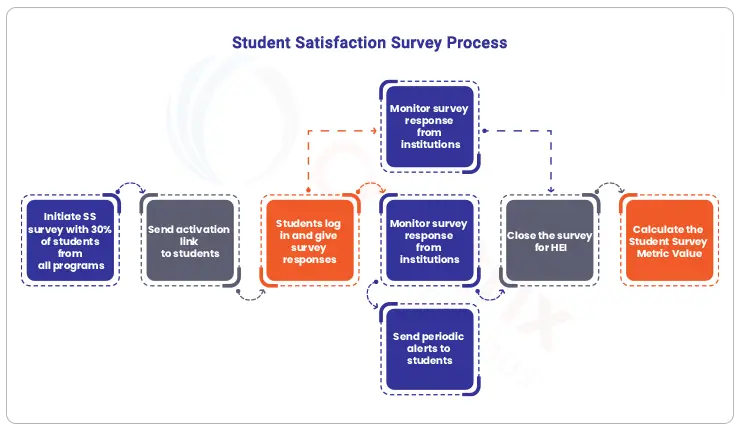
The Student Satisfaction Survey (SSS) aims to engage students in the quality assurance process. The SSS scores will be calculated as part of the overall CGPA.
In order to conduct the SSS, the institution should have submitted the complete student count with their enrollment details, number, program, year of study, contact number, and email IDs.
A stratified random student sample is chosen for the survey.
In the sample, the student group is evenly mixed across different classes, gender, and the year of enrolment. In order to reach the desired level of response, the SSS initiates a maximum of two survey attempts, based on the below requirements:

Did you know?

6. Onsite Assessment - Peer Review by Visiting Team
This is an important step in the NAAC accreditation process. The onsite assessment is nonetheless a peer review by the visiting team. The team assesses all the information provided on the qualitative metrics.
The team comprises eminent academicians, researchers, and senior administrators, all from the educational arena. They undertake an Assessors Orientation Programme, which grooms them to be ace Peer Team members.
NAAC has distributed the quantitative and qualitative metrics in a proportion of around 2/3rd and 1/3 rd respectively. HEIs are expected to submit their data/information online in the said formats.

7. Institutional Grading
To reiterate, only institutions that score 30% in the DVV process would be eligible to qualify for the onsite assessment by visiting Peer Teams and generation of results by the NAAC.
There are three main places that happen in this last level of the A&A process.
Post the onsite assessment, the visiting team generates a qualitative report ((Ql), which is after identifying the SWOC (strengths, weaknesses, opportunities, and challenges) and assigning scores on the qualitative metric.
After the peer or the site visit and their online evaluation, the NAAC combines all the following three scores to arrive at the overall Criterion-wise Grade Point Averages (CrGPA).
- Peer Team Report
- Statistical Analysis of Quantitative Metrics (QM)
- Institutional Grade Sheet
Did you know?

The final outcome would then be placed before the Executive council of NAAC for approval. Followed by it, NAAC Accreditation status and the institutional Grade are declared.
All said, yes, carrying out the NAAC process involves a lot of documentation and report generation! But with the right expert’s intervention, you could easily get through it.
How does the Creatrix Accreditation Management System help in the NAAC accreditation process?
Creatrix Accreditation management software is an integrated solution for generating, collecting, organizing, and administering all required data and reports in predefined formats specified by the NAAC regulatory body. It also includes a variety of graphical and analytic tools, as well as collaborative dashboards for tracking data submission progress.
Here’s how Creatrix Accreditation software works in NAAC automation;
- Effectively plan, assess, and analyze NAAC accreditation/re-accreditation processes
- Continuous Quality Improvement (CQI) tools in line with educational standards
- Calculation of CGPA and NAAC grade and criteria-wise value attainments
- Upload the documents
- Assign project managers, reviewers, and expert committees
- Proper delegation of roles and responsibilities
- Tools to interact with the accreditation body
- Schedule on-site team visits
- Make accreditation payment
- Prepare SSR reports with complete qualitative and Quantitative metric calculations
- Draw instant reports in desired formats like Excel, PDFs, and links as required by NAAC
- Evaluate and track the NAAC process to completion with dynamic role-based dashboards
- Direct data fetching from various other touchpoints
- Data-driven decision-making
- Project management tools like task manager, discussion, notification, meeting, and feedback to collaborate effectively, meet deadlines, and achieve quick results.
At Creatrix Campus we have an eminent and professional team of Accreditation experts who would start working much in advance on the impending requirements and recommend ways to build data and reports, ethically. The product is designed with a sophisticated report builder that comes in handy with the changing needs of accreditation reports. The intuitive dashboards are very helpful to the IQAC and the QA teams to monitor and track accreditation-related areas with the help of Continuous Quality Improvement tools and most importantly student engagement beyond class hours.
Request a free demo to learn more about how we could help you in the NAAC Accreditation journey.



